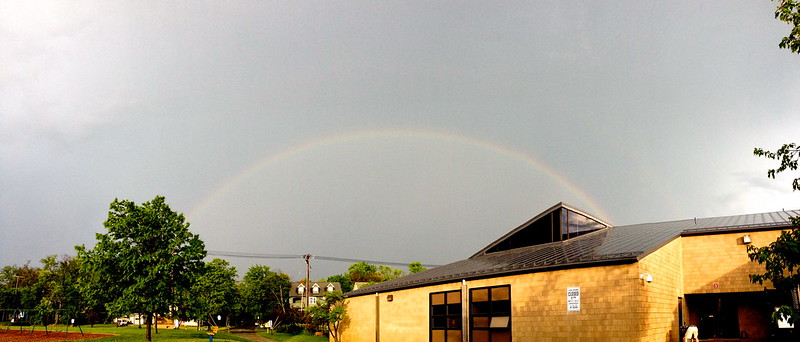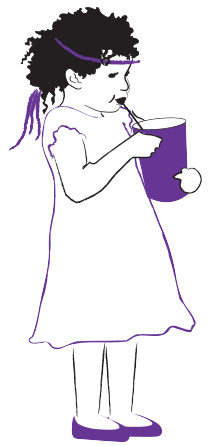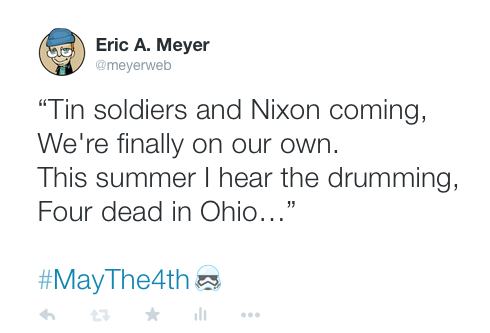Witness
Published 10 years, 6 months pastI’m writing this as Game 3 of the NBA Finals is playing downtown, not knowing how it’s going. The Cavaliers may be up by 30, or down by 30; it doesn’t actually matter to me either way. I’m not much of a sports fan, truth be told.
But I am a Cleveland fan.
I’ve lived here more than half my life now, after a rootless early childhood and then a semi-rural upbringing. I came here for college, way back in the late 1980s, and never left. Never wanted to leave. The opportunities were there, but I never took them. When Netscape came to me and asked if I wanted to be a Standards Evangelist, I told them only if I could do it without relocating. They said yes. I told Google the same thing about a decade later; they said no.
Something about this city got into me, and didn’t let go. We have our problems, sure. You’ve heard some of them on the news. Everywhere has problems. I hope we can fix ours, and I hope other places can fix theirs. Either way, I have long been proud to call Cleveland home, as I will for years to come.
Most of my friends are incredibly excited about the Cavaliers. Deliriously so, some of them. It’s pretty awesome to experience, even secondhand. So I’ve been reading about how the first two games of the finals went, and in them, I recognized something very familiar.
From what I’ve read, pretty much nobody outside the 216 gave the Cavs any real chance in this series. The Golden State Warriors were judged to be simply too powerful. And yet, Game 1 went into overtime, where the Cavs lost steam and one of their star players to injury. Everyone (outside Cleveland, that is) said that was it. The Cavs made it a great game, they said, but being down to one star player was the end of their run. After which, Game 2 went to overtime, and the Cavs won it by a razor-thin margin.
That’s Cleveland in a nutshell.
This is a city that is constantly underestimated and derided, but we already know our faults, and we know our strengths. There’s a core of steel under the bruised and battered skin. Just like the Cavs. Down to one headline player, they managed to force overtime and pull a win on the home court of the team that everyone said they couldn’t beat. The Grit Squad, they’re calling themselves now. People are saying the LeBron has taken a team of players that shouldn’t be this good and made them into a force. That may well be, and if so, LeBron stands to make far more as Coach James than he ever will as King James.
America loves an underdog, but it also loves to dump on Cleveland, so I have no idea how sports fans around the country have seen this series. What I know now is that, win or lose, the Cavaliers have shown the rest of the country what this city is really like, and for that alone they’ve earned my respect. I think they deserve the same from anyone who’s witnessed what they’ve done.
So Game 3 is underway, probably close to done or even finished by now. I have no idea if it was another squeaker or a blowout, nor who won. As soon as I publish this, I’ll go check on how things went. For the sake of all my friends, I hope the Cavs made it a win in their first Finals home game — but however things turned out, I’m sure The Q was bedlam tonight as the fans celebrate not just being in the finals, but the spirit of the team that embodies this city I call home.


